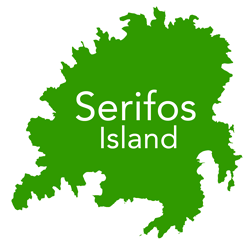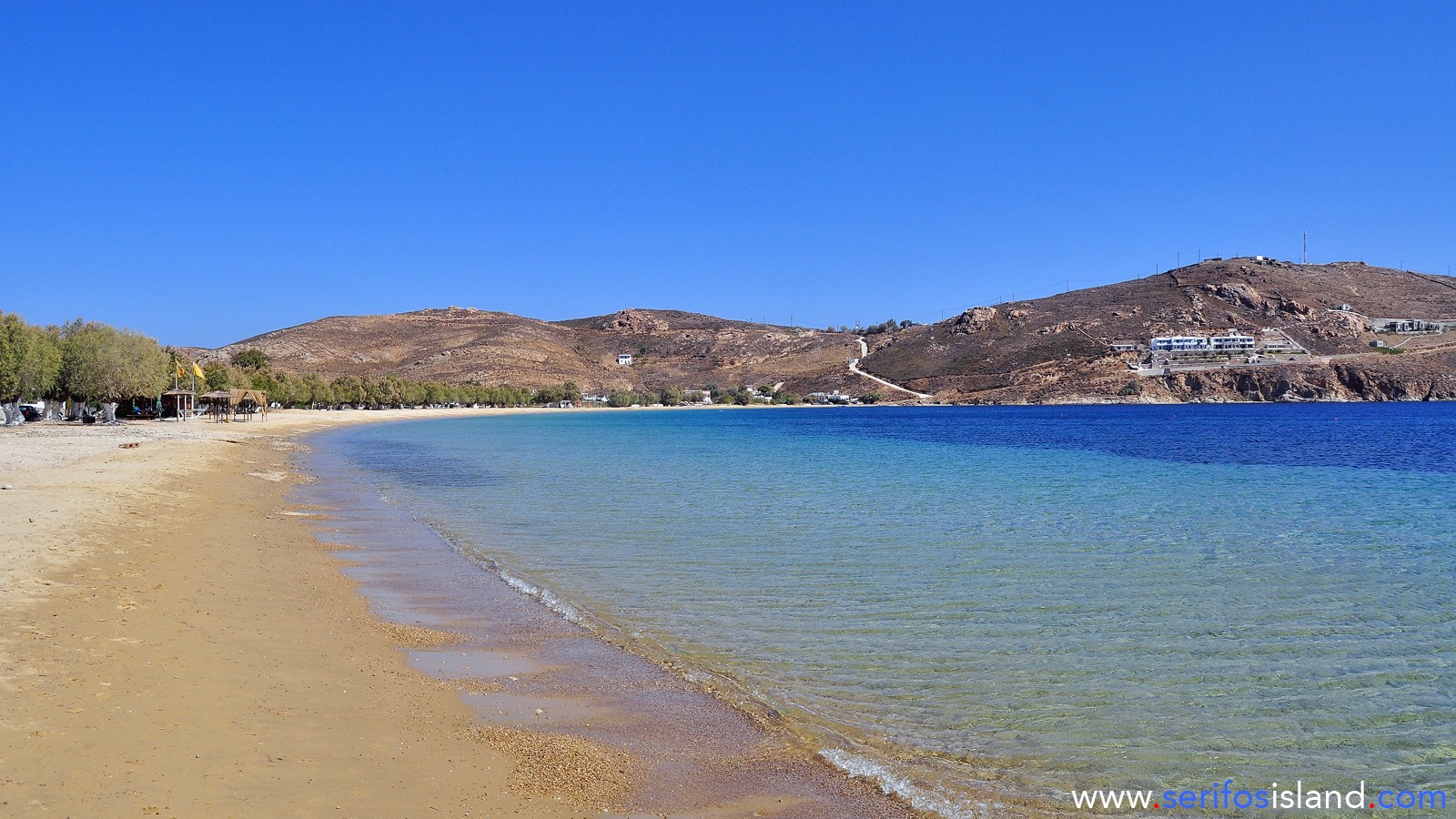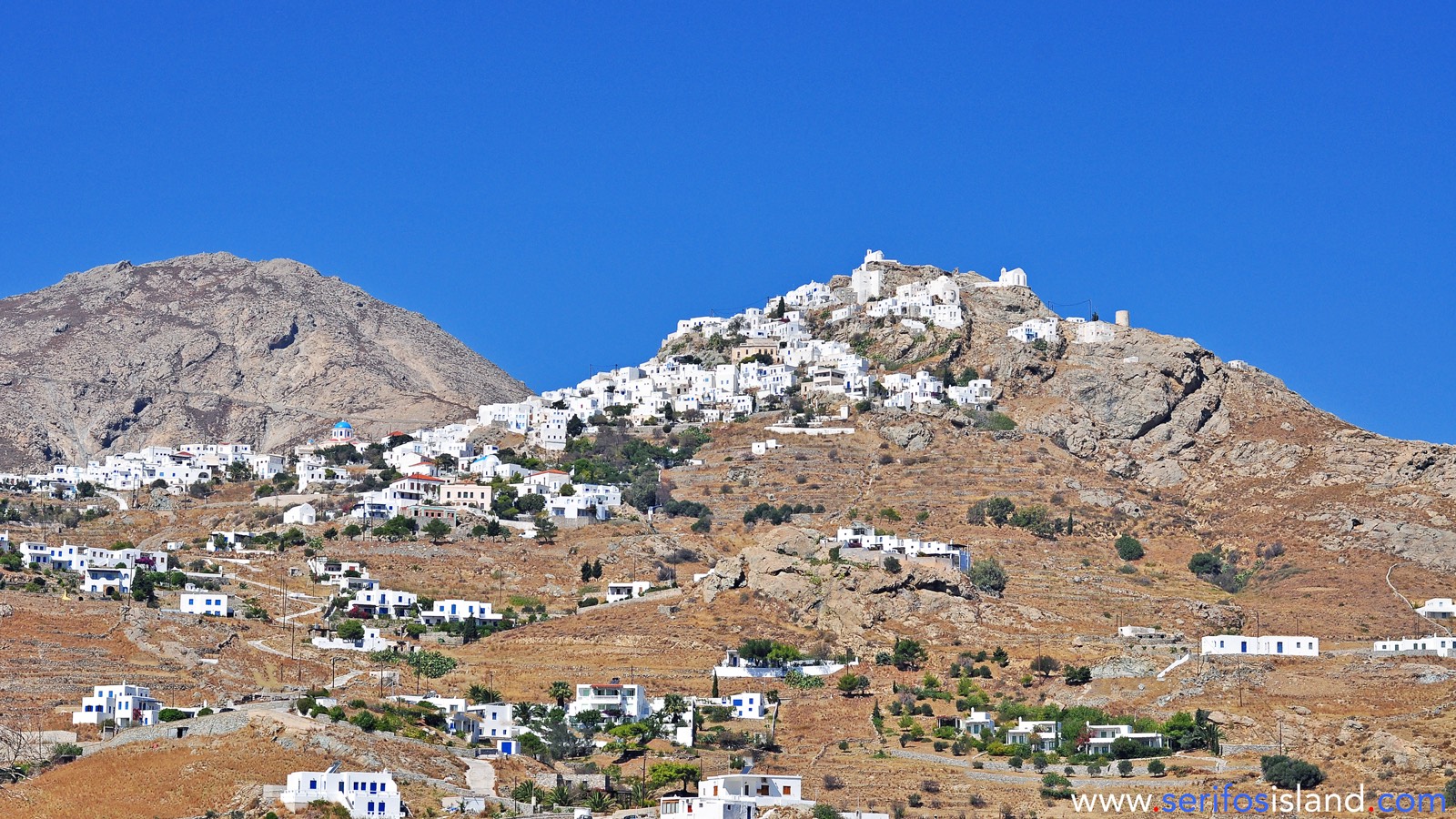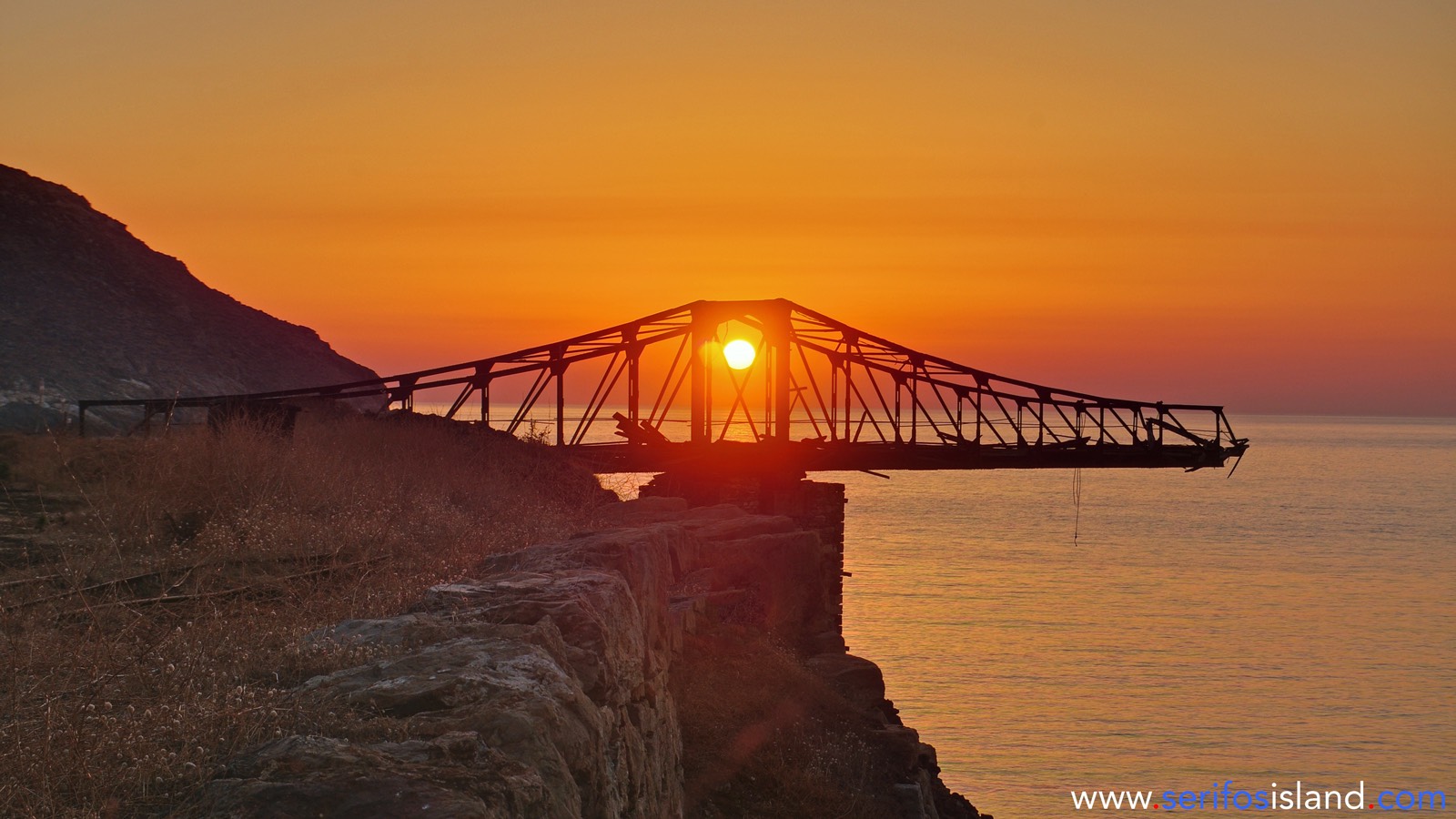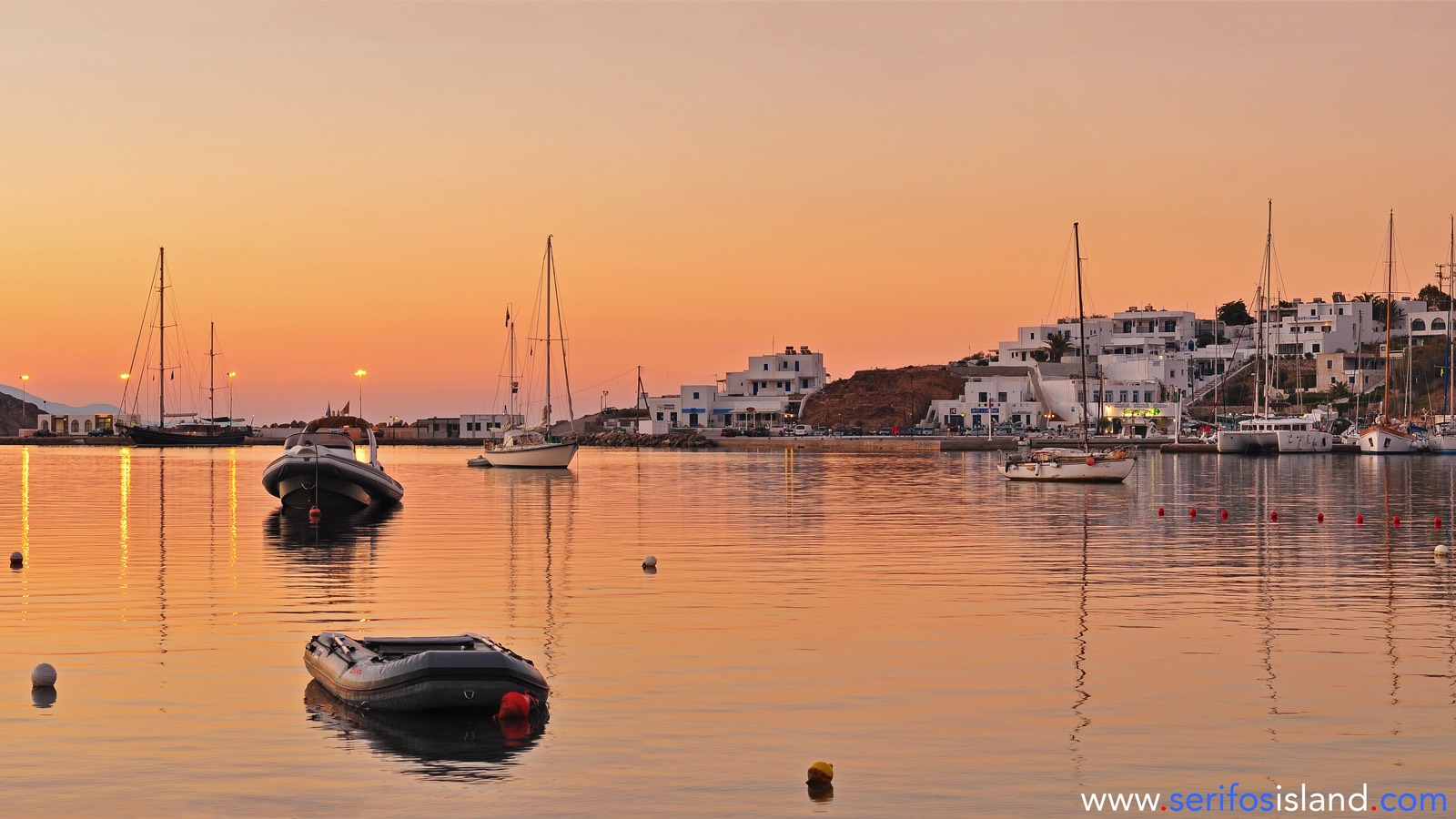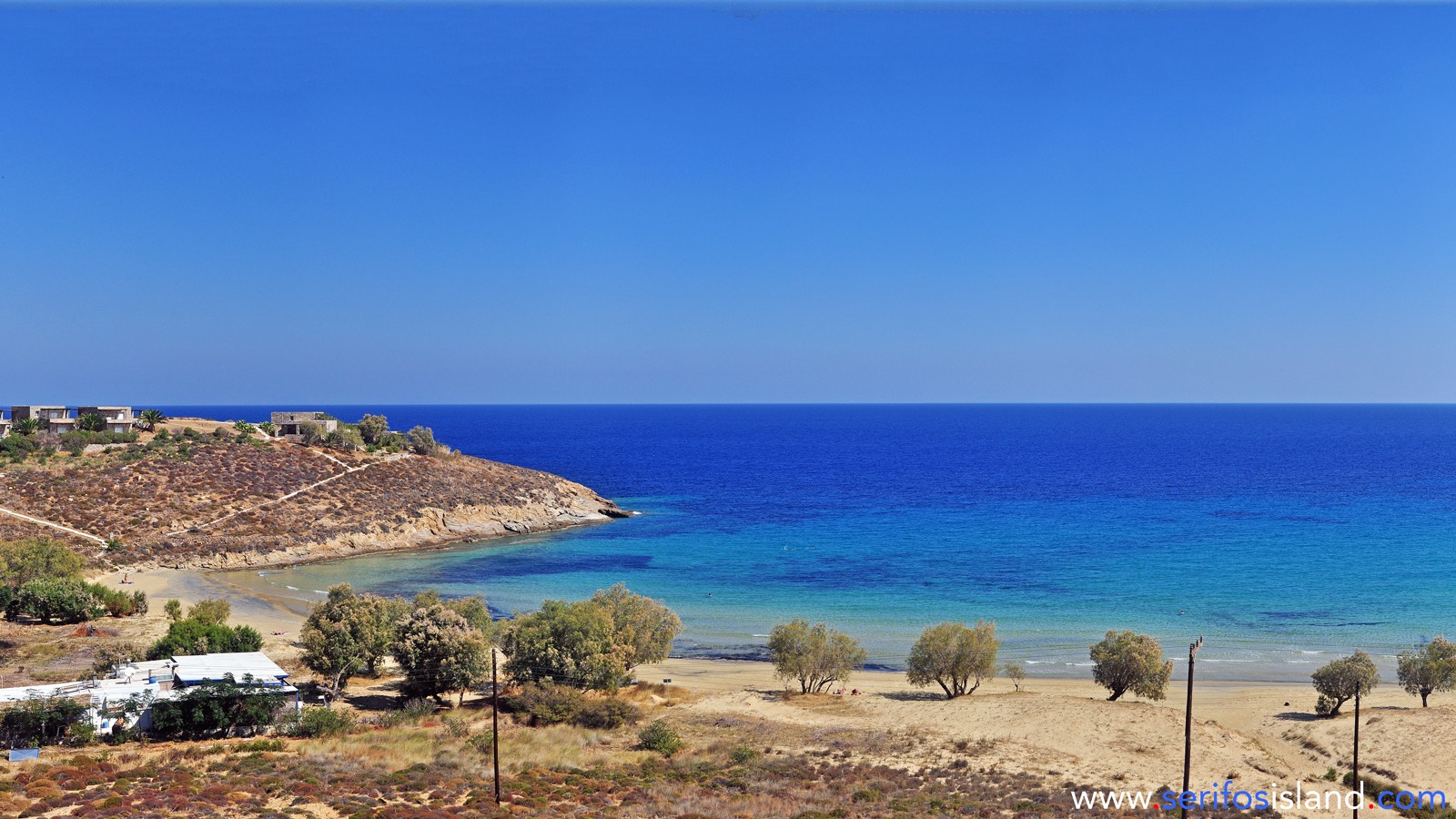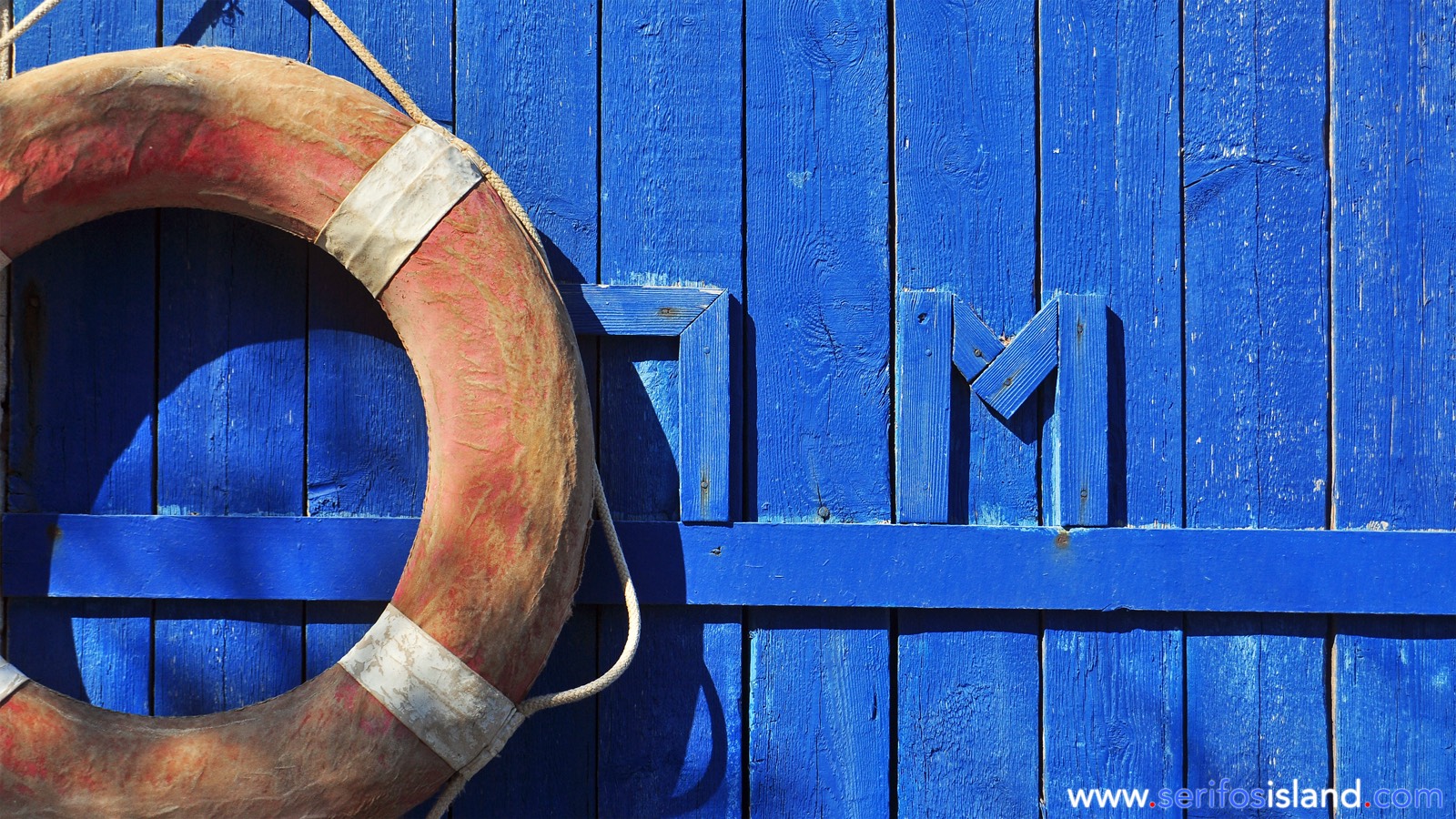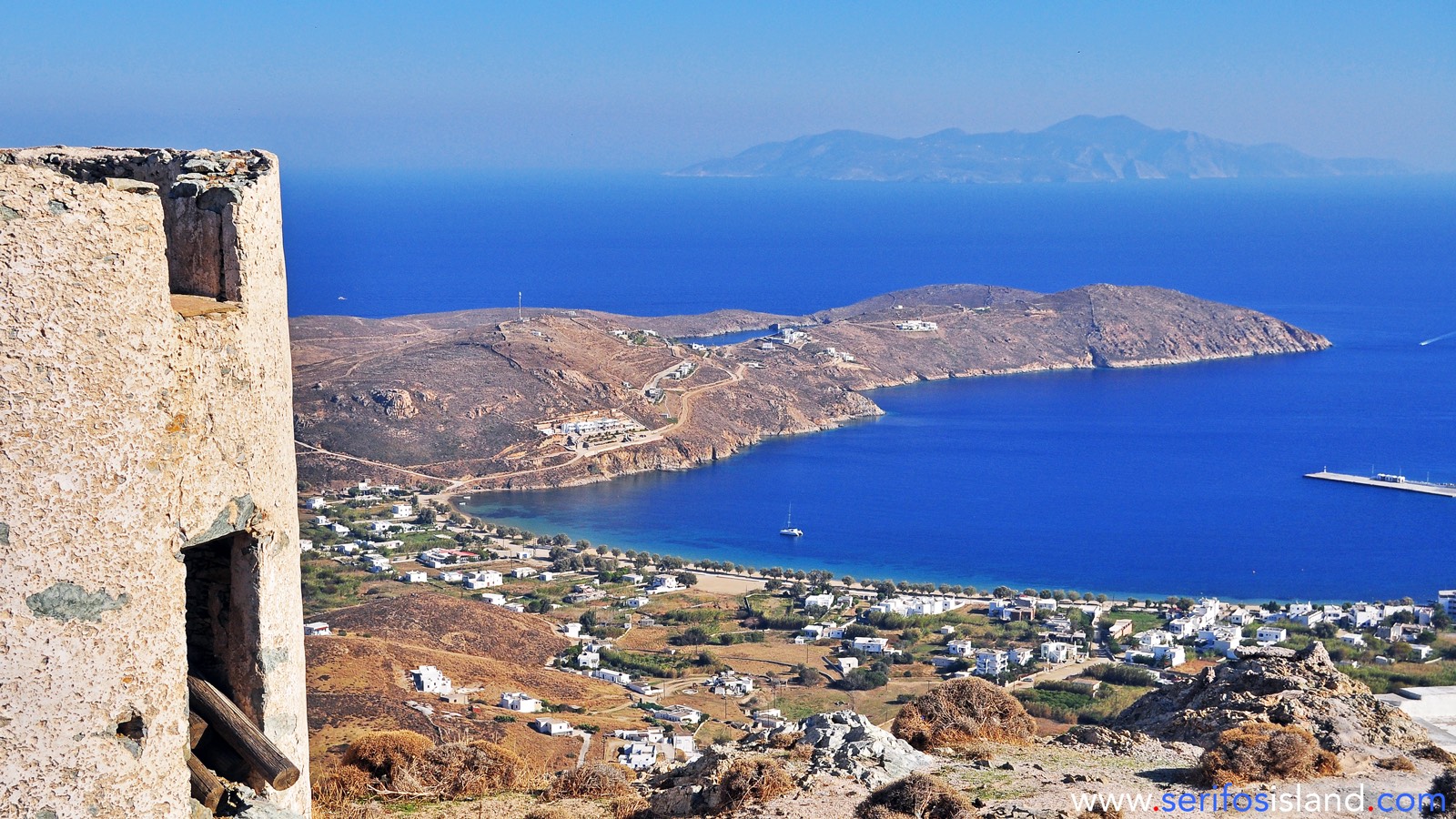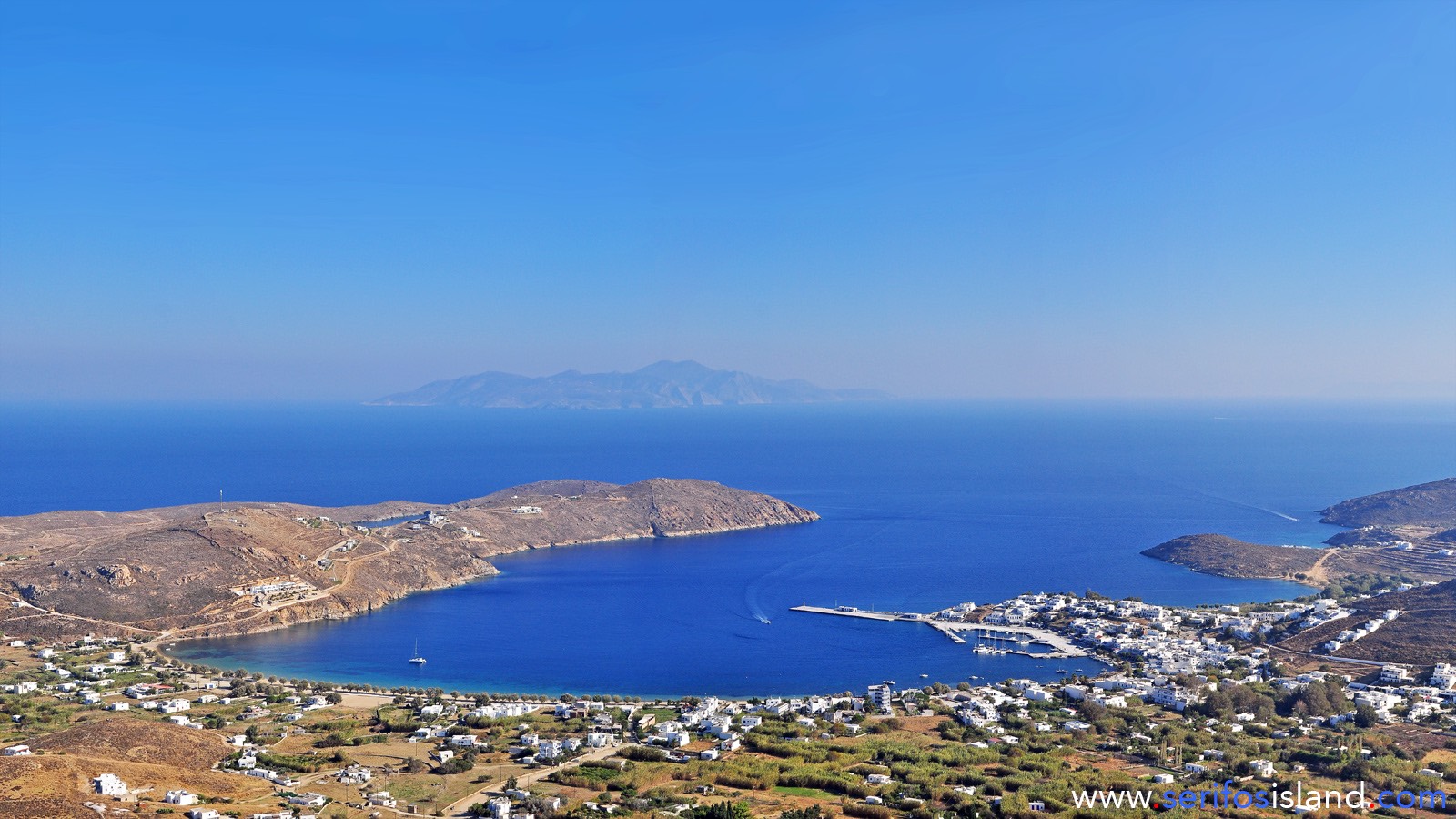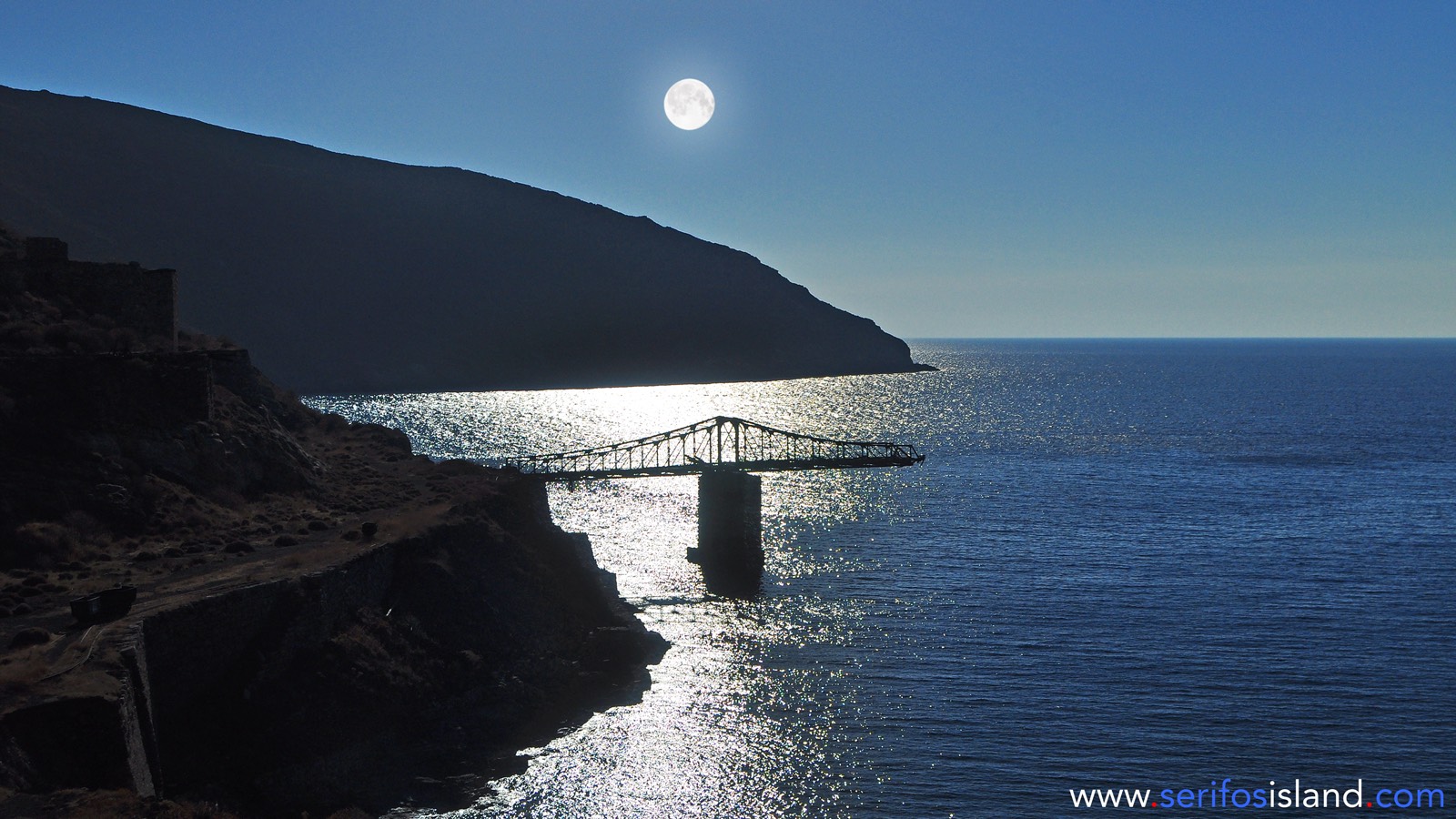The Hellenistic White Tower
Worked blocks of island marble built into the walls of the medieval castle crowning Chora, the hilltop main town of Serifos, show that the ancient capital was there as well. Chance finds, primarily marble funerary sculpture, are displayed in the Archaeological Collection in Chora (open Tues.-Sun.).The most impressive ancient monument is the (Άσπρος Πύργος), a Hellenistic marble watchtower (c. 300 BC) with walls preserved to 2 m. and an interior staircase, standing on a hilltop just east of the road from Chora to Mega Livadi, near Mega Chorio. Work began in 2011 to study the fallen blocks for an eventual reconstruction.
At least four other ancient towers have been located, including the megalithic Psaros Pyrgos (Ψαρός Πύργος) or "Couch of the Cyclops" in the SW corner of the island. The so-called "Castle of the Old Lady" (Κάστρο της Γριάς) above Ganema and Koutalas preserves scant remains of a collapsed dry-stone construction in a notch below the twin rocky summits. Rough fragments of white marble and rooftile, and archaic fine-ware potsherds on the SE terraces of the hillside, suggest the existence of an ancient sanctuary.
Monastery
The fortified Monastery of the Taxiarchs, dedicated to the Archangels Michael and Gabriel, was built in 1572 just E of the village of Galani. The sole monk is Archimandrite Makarios, who entered the monastery as a youth in 1958 and continues (June 2012) to maintain it with admirable devotion.The Miners' Strike 1916
The Mines - Headquarters of the former mining company of Serifos, Megalo LivadiIn the 20th century, the mines of Serifos were exploited by the mining company "Societe des mines Seriphos-Spiliazeza," under the direction of German mineralogist A. Grohmann (died 1905). In the summer of 1916, in response to low pay, excessive working hours, poor safety conditions, and the company's refusal to rehire workers who had been drafted into the Greek army and recently demobilized, the 460 miners formed a union and organized a strike. Their leader was Constantinos Speras, a Serifos native educated in Egypt, who was an anarcho-syndicalist with long experience of labour struggles on the Greek mainland. In response to the strike, Grohman asked for the help of Greek authorities, who sent a 30-man gendarmerie (Χωροφυλακή) detachment from nearby Kea. After detaining Speras and the strike committee, the gendarmerie lieutenant ordered his men to fire on the workers, who had gathered at the ore loading dock at Megalo Livadi and refused to permit a cargo ship to be loaded. Four workers were killed and a dozen wounded. The workers, supported by their wives, attacked the gendarmes with stones, killing three of them and routing the others. The freed leadership took control of island institutions and send a message placing Serifos under protection of the French fleet at Milos. This effort at collective proletarian self-organisation was cut short by the refusal of the French navy to intervene, and by the arrival of a Greek warship. Speras was arrested and charged with high treason, but released a few months later when the royalist government was ousted. Grohmann was given once again the control of the mines, after granting improved working conditions and an 8-hour workday. Speras would return to Athens and resumed his labor activities, but was assassinated in 1943, allegedly by Communist Party (KKE) maximalists.
